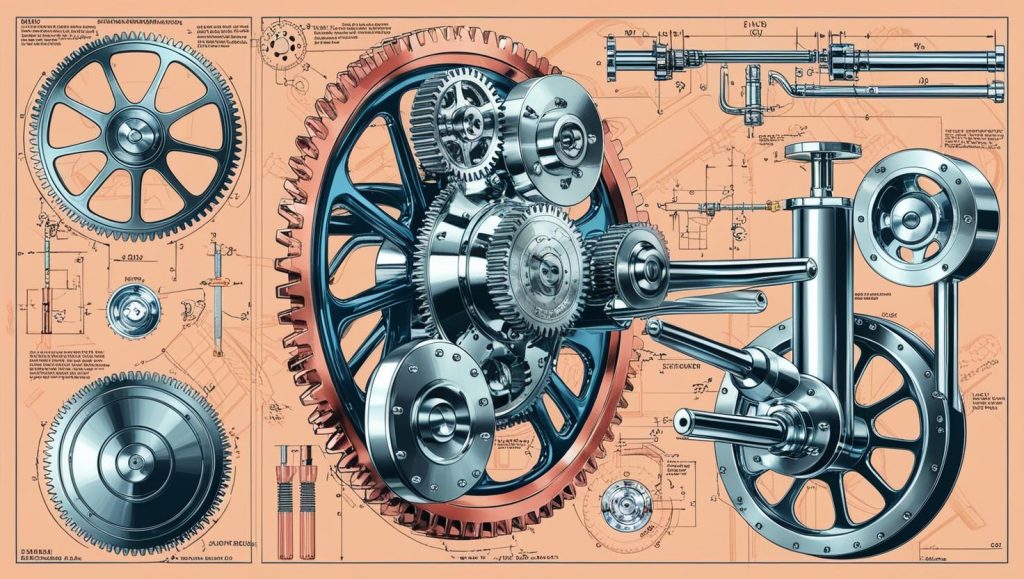Introduction: Why Mechanical Engineering Homework Help is Essential
Mechanical engineering is one of the broadest engineering disciplines, encompassing the study of forces, motion, energy, materials, and design principles. From thermodynamics to fluid mechanics and machine design, students often face challenging assignments that require a strong understanding of physics, mathematics, and engineering principles.
If you’re struggling with your coursework, this Mechanical Engineering Homework Help guide will provide a structured approach to solving problems, key concepts, and valuable resources to help you succeed.

What is Mechanical Engineering?
Mechanical engineering is the branch of engineering that deals with the design, analysis, and manufacturing of mechanical systems. It covers various subfields, including:
- Thermodynamics – The study of energy, heat, and work.
- Fluid Mechanics – The study of how fluids behave under various forces.
- Solid Mechanics – The study of forces and deformations in solid materials.
- Machine Design – The process of designing mechanical components and systems.
- Manufacturing Engineering – The study of production processes.
Each of these areas is crucial for understanding real-world engineering problems and requires strong problem-solving skills.
Core Topics in Mechanical Engineering Homework
1. Thermodynamics
Thermodynamics is the study of energy and how it transforms from one form to another. It involves key concepts such as:
- Laws of Thermodynamics:
- First Law (Conservation of Energy): Energy cannot be created or destroyed, only transferred.
- Second Law (Entropy Increase): Systems tend toward disorder.
- Third Law: Absolute zero temperature is unattainable.
- Common Homework Problems:
- Calculating heat transfer in a system.
- Determining work done by a gas in a piston-cylinder system.
✅ External Resource: Khan Academy – Thermodynamics
2. Fluid Mechanics
Fluid mechanics is essential for designing hydraulic systems, turbines, and aerodynamics. It covers:
- Bernoulli’s Principle: Describes the relationship between pressure and velocity in a flowing fluid.
- Navier-Stokes Equations: Governs fluid motion.
- Reynolds Number: Determines whether a flow is laminar or turbulent.
- Common Homework Problems:
- Calculating pressure differences in a pipe.
- Determining lift force on an aircraft wing.
✅ External Resource: MIT OpenCourseWare – Fluid Mechanics
3. Solid Mechanics & Strength of Materials
This topic focuses on the behavior of solid objects under various forces. Key concepts include:
- Stress and Strain: Measures of force per unit area and deformation.
- Beam Bending: How beams deform under loads.
- Torsion: Twisting forces acting on objects.
- Common Homework Problems:
- Calculating beam deflections.
- Determining material failure under load.
✅ External Resource: Engineering Toolbox – Stress & Strain
4. Machine Design & Kinematics
Machine design involves creating mechanical components that function efficiently under various loads. Important topics include:
- Gears and Bearings: Used in transmission systems.
- Linkages and Mechanisms: Convert motion from one form to another.
- Fatigue and Fracture Mechanics: Predicting the lifespan of materials under cyclic loads.
- Common Homework Problems:
- Designing a gear train for specific torque requirements.
- Calculating the efficiency of a bearing.
✅ External Resource: NASA – Machine Design Basics
5. Manufacturing Engineering & Materials Science
Understanding material properties and production techniques is essential for mechanical engineers. Topics include:
- Casting, Welding, and Machining: Different ways to shape materials.
- Metallurgy: Studying metal properties and treatments.
- 3D Printing and Advanced Manufacturing: New-age production techniques.
- Common Homework Problems:
- Selecting materials for an aircraft component.
- Designing a manufacturing process for a mechanical part.
✅ External Resource: ASM International – Materials Science
Common Mechanical Engineering Homework Problems and Solutions
Problem 1: Calculating Work Done in a Thermodynamic System
Question: A gas expands from 1L to 5L against a constant external pressure of 2 atm. What is the work done?
Solution:
Work done in an expansion process is given by: W=−PΔVW = – P \Delta VW=−PΔV W=−(2×101.3)×(5−1)W = – (2 \times 101.3) \times (5 – 1)W=−(2×101.3)×(5−1) W=−810.4JW = – 810.4 JW=−810.4J
Thus, 810.4 J of work is done by the system.
Problem 2: Calculating Stress in a Beam
Question: A beam with a cross-sectional area of 0.01 m² carries a force of 5000 N. What is the stress?
Solution: σ=FA\sigma = \frac{F}{A}σ=AF σ=50000.01=500,000 N/m²\sigma = \frac{5000}{0.01} = 500,000 \text{ N/m²}σ=0.015000=500,000 N/m²
Thus, the stress in the beam is 500 kPa.
How to Approach Mechanical Engineering Homework Effectively
- Understand the Theory: Read and grasp the fundamental concepts before jumping into problem-solving.
- Break Down the Problem: Identify given data, required solutions, and applicable equations.
- Use Online Resources: Websites like Coursera and edX offer free mechanical engineering courses.
- Practice Regularly: The more you solve, the better you understand.
- Seek Expert Help: If you’re struggling, professional tutoring services like Chegg can provide assistance.
Additional Resources for Mechanical Engineering Homework Help
Here are some excellent sources to deepen your understanding:
- MIT OpenCourseWare – Mechanical Engineering
- Khan Academy – Engineering
- Mechanical Engineering Stack Exchange
Conclusion: Mastering Mechanical Engineering Homework
Mechanical engineering is a vast and challenging field, but with the right study techniques and Mechanical Engineering Homework Help, you can overcome any difficulty. Understanding key concepts, practicing problems, and using online resources will significantly improve your performance.
Whenever you’re stuck, remember that expert help is available through tutoring services, forums, and educational platforms. Keep practicing, and soon, you’ll find mechanical engineering problems much easier to solve!


